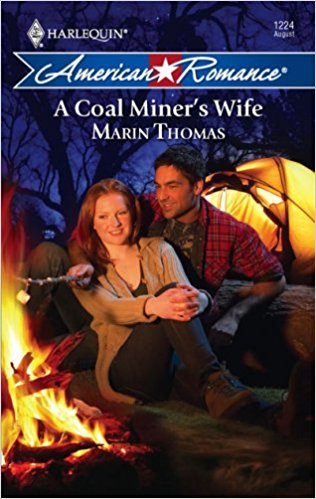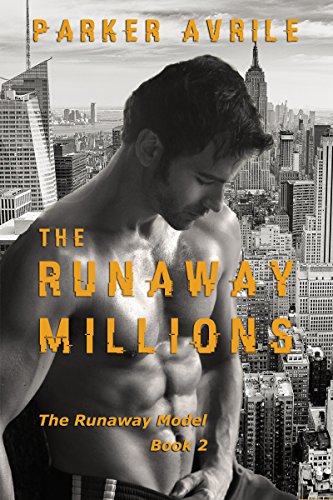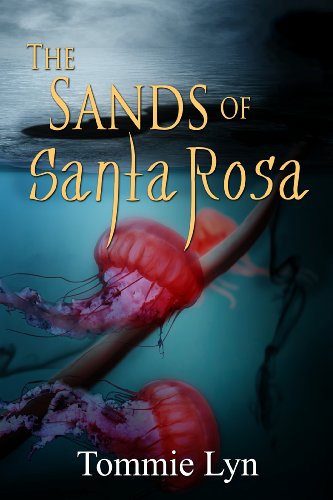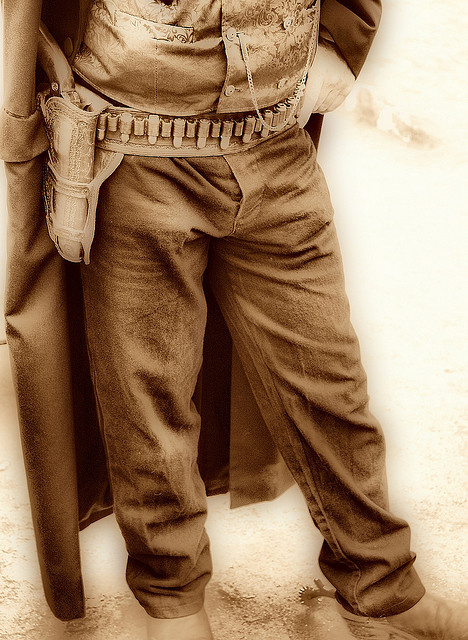I've been thinking that some of the observations in Nina Eliasoph's Avoiding Politics: How Americans Produce Apathy in Everyday Life (1998) might be applicable to the romance-reading and romance-writing community, particularly in the US context given that Eliasoph's research was carried out there.
Eliasoph "participated in a wide range of civic groups - volunteer, recreational, and activist groups" (8). She looks at how US citizens discuss (or don't discuss) problems/politics in these groups and she found differences between the "volunteers", the "activists" and the people in the "recreational" groups [she also met some people who fell into the "cynical" category i.e. they were politically aware, critiqued the status quo vigorously but didn't follow this up by becoming activists]. It felt to me as though this might have some relevance to how some people behave in the romance community too, and it might explain some apparent friction between the "if you can't say anything nice, don't say anything at all" people and those who want to discuss problems such as the lack of diversity in 'mainstream' romance publishing, "white-washed" covers and the segregation of African-American romances.
Empowerment through solving small problems
In the "volunteer high school parents' groups", Eliasoph found that members
ignored the political problems that they inevitably encountered in the course of their work - the race riots, caved-in classroom ceilings and flooded classroom floors at the high school, for example. By tuning into their political manners, I realized that volunteers assumed that volunteer groups exist to show that regular citizens really can make a difference, and that talking about these problems would sink the buoyant feeling of empowerment. (21)
Although their lack of political discussion may seem apolitical, Eliasoph suggests it's based on their ideas about what it's possible to achieve and what, therefore, should be focussed on in order to make citizens feel better about their communities:
Volunteers were poised to combat the specter of futility and to convince all newcomers that "You really can make a difference!" and that "Everyone has something to offer," as they often put it. They hoped to communicate that message through the very act of volunteering; and tried not to pay attention to problems that might undermine that message of hope. So, they tried hard not to care about issues that would require too much talking to solve, and tried to shrink their concerns into tasks that they could define as unpolitical, unconnected to the wider world. These citizens thought they could inspire feelings of empowerment within that small circle of concern; and they implicitly believed that helping people feel empowered was, in itself, doing something good for the community. (23)
It struck me that when, in romance, a problem is encountered, this is generally the sort of outcome depicted: the protagonists will find that the problem (a child who needs special medical treatment, an abandoned child, a teen who needs to be turned away from making bad choices) is one not too large for them to solve.
Eliasoph writes that "In trying so hard to maintain their "can-do" spirit, their optimism and hope, volunteers assumed that they had to hush any discussion of political problems" (26). There's certainly an immediate emotional pay-off to be gained from this kind of attitude but perhaps it's easier to maintain for people with a certain degree of privilege i.e. for whom the 'big problems' make less of a difference on a daily basis. That's not to say that they're people with huge amounts of power, just that they're people who
could have thought that they were powerless and been angry about that, but since they wanted to think that they live in a democracy where citizens like themselves have power to work on issues that are "close to home," they assumed that their powerlessness was their own fault. They could have tried to "save face" and blame someone else for their powerlessness, but they preferred to think it was their own fault than to think that there was something deeply wrong with the world. (75)
There will, however, be people whose circumstances are such that they can't really avoid thinking there's "something deeply wrong with the world". And therefore I wonder if there might be more openness to less neat endings in non 'mainstream' romances, depicting (and probably whose intended readership is among) people from communities which are less privileged [at least in certain important respects, because intersectionality means that someone might be privileged in some contexts/areas and not in others]. For example, in the African-American historical romance and the lesbian romance whose community scenes I examined in Pursuing Happiness, I found that in both cases the novels explicitly showed the problems to be ones which could not be shrunk into "tasks that they could define as unpolitical, unconnected to the wider world". [I don't, however, want to imply that all AA or LGBT+ romances are focused on political issues, because there are plenty which aren't.]
Show, don't tell
A common piece of advice given to authors is to "show, don't tell". The idea is that this gets the reader more involved, and I think there are therefore parallels here with the thinking of Eliasoph's volunteer citizens:
Volunteers said that meetings were a waste of time compared with the groups' real work. Compared to the activist groups, the striking feature of volunteers was just how little time they spent in group contexts. Though volunteers attended many meetings every week, each was very to-the-point, short, and task-oriented. When I said that I was studying "community life - what gets people involved in groups and how to get more people involved," many proudly recounted a long, long list of their volunteer activities, amazing me with how many evenings a week they devoted to volunteering. None mentioned why they were involved. Their point was that activity itself was a matter-of-fact way of demonstrating commitment.
What was missing was respect for discussion itself, willingness to debate about troubling issues that might not be resolved immediately; willingness to risk discouragement. (28)
One of the features of much of romance (with the clear exception of inspirational romance, in which the issue of being "unequally yoked" does come up) is the way in which the believability of the happy future for the central relationship is often established by focusing on issues of practical compatibility (showing compatibility in the bedroom, for example) rather than by showing the protagonists discussing their political views, views on childcare, spending money etc.
There might also be reasons for a lack of discussion which are mentioned by Eliasoph in the context of her "recreational" groups made up of "private people; they believed that what really matters is what is "inside"; that the tender, flickering 'real self' can almost never be expressed in words" (86):
For private people, talk did not legitimately matter. Betsy sounded as if she felt unreasonable to want to know more about the potential boyfriend than "what she could see"; she wanted to be content with what she already knew about his most basic humanness. [...] women often noted that their boyfriends or husbands hardly ever talked, but could "go on a two-hour drive and not say a word except 'You hungry?' and 'Let's stop.'" Women's tentative remarks about their silent husbands and boyfriends were not quite complaints, though, because the women were not sure whether they were justified in complaining about the silence [...]. Women wanted to feel happy just to be in their husbands' or boyfriends' company, side by side in the truck. They did not want to want anything more, since the official belief about talk was that it is cheap. Expecting conversation was not considered legitimate. And so there was very little of it. What group conversation there was, was relentlessly unserious. (97)
There's usually a bit more talk than "You hungry?" and "Let's stop" in a romance, but then, even the "private" people talked in their most romantic moments:
Talking as an activity in itself was a special event. "Staying up till two talking" was one sure sign of love; it happened only at the moment lovers were falling in love, not after and not before. Since talk itself was such a potent sign, reports of these intimate moments focused on the fact that the new lovers talked, not on the content of the conversation. After this proud moment of intense talk, if it happened, there was little to say. (94)
For people from this background, perhaps reading a romance is akin to experiencing this moment of "falling in love" and the happy ending is welcome at the point when the lovers declare themselves because "after this proud moment of intense talk" there would be "little to say". The lack of political content in a romance would not be an issue at all because it would be expected that the book/report on "intimate moments" would focus "on the fact that the new lovers talked, not on the content of the conversation".
Politics spoils the mood
When protagonists do express their views explicitly on certain issues, readers often state that they find this "preachy" and that it spoils their enjoyment of the story. This might be because they, like the "private people" felt that
Trying to speak seriously was called "getting on a high horse"; that is, pedantically reciting facts and opinions in a monologue. People [...], women especially - who did this violated the rule of enforced joking [the "private people", when they did talk in groups, tended to joke about, often on the topic of sexuality, so perhaps a bit like some of the conversations in the romance community about male cover models]. (111)
Alternatively, when people attempt to discourage 'strident' discussions about political issues around romance publishing it may be because, as with Eliasoph's volunteers,
To talk about racism would have meant changing their political etiquette, to stop trying so hard to keep up that can-do spirit and let some frightening uncertainty in. Actively ignoring such tensions was considered a positive good, a moral act. Better would be to work on projects that illustrate how easy, effective, and enjoyable involvement is; then, they believed, everyone will get involved and race problems will dissolve in the busy harmony.
Their efforts at ignoring race were also part of their general effort to avoid snobbery; to be welcoming and encouraging meant treating everyone as an equal, not as a member of a category. When I asked on the questionnaire what race they were, many responded as Sherry did: "it doesn't matter what race you are. Anyway, it shouldn't." Having to talk about something, in fact, would be a sign that there is a problem: if things are going smoothly, regular people should not have to sit down and talk. (31, emphasis added)
I wonder if that's one reason why protagonists in 'mainstream' romances might be unlikely to discuss things: it would imply there were problems, or at least potential problems in the relationship. By contrast, in inspirationals, where the intended readers share a belief that people will always sin (i.e. things are always on the verge of not going smoothly), protagonists may be much more likely to sit down and pray.
As far as the romance community, rather than romance protagonists are concerned, it may be worth noting Eliasoph's observation that the volunteers' tactic of:
Avoiding discouragement and snobbishness [...] had costs, among which probably was the community's ability to deal with race problems. Many parents of color came to one or two meetings and then never returned. I spoke to one who had come only once; she had concluded that the Parent League was "a bunch of white people who weren't interested in race." (31)
Tone Judgments and Politeness
"Whining" and "moaning" are very subjective to define, as is "rudeness". For Eliasoph's US volunteers it seemed to be accepted that
talking about problems without immediately offering a solution is just complaining. [...] What was most taboo was speaking about problems in terms of justice - publicly minded speech that was considered wrong, but addressing the same problem in a piecemeal way was considered all right. (33-4)
In addition,
"Requesting" was okay, but holding companies accountable was not. Asking politely was okay, quietly negotiating behind-the-scenes was acceptable; but raising a matter of principle and trying to discuss it publicly was considered unseemly [...] volunteers assumed that talking would not itself produce knowledge or power. [...] Volunteers were not unconcerned or unaware or lacking in the "inner values and beliefs" that feed political concern. [...] Most volunteers were privately obsessed with political worries, but simply assumed that they could not do anything about them, and that volunteer groups were the wrong contexts for discussing them. Combating futility meant, above all, combating the feeling of futility, and especially, combating the expression of such feelings aloud in volunteer group meetings, where such feelings could be most destructive. (34-5)
The RWA: From "Volunteers" to "Activists"?
It's interesting to see the Romance Writers of America's recent posts which suggest that they're moving from a "volunteer" frame of mind to one more akin to that of the "activists". In particular, a post from 4 April 2016 about a historical issue shows that the current board are interested in making explicit their political stance and aren't backing away from conflict in the way that the board did at the time of the event in question:
At the November 2015 Board of Directors meeting, one of the issues discussed was an RWA survey conducted in 2005. Though this occurred eleven years ago, the ill effects of that survey still linger for many members. The survey was included in the Romance Writers Report and asked RWA members to vote on whether romance should be redefined as being between one man and one woman. The survey responses were never acted upon, and RWA’s definition of romance was not changed.
The survey, however, sparked a discussion that compelled our LGBT+ members to justify their existence to others and to participate in debates about their humanity and their capacity to love. This incident was a low point from which RWA’s reputation has never recovered. The organization later reaffirmed RWA’s commitment to making sure that “any definition of romance should be broad and inclusive.” This statement, however, did not make it clear that, in issuing the survey, RWA failed its members, its genre and its mission. We want to make that clear now.
We apologize for letting our members down and for failing to treat all our members with the respect they deserve.
RWA is committed to creating an inclusive, respectful environment where all career-focused romance writers can advance their professional interests, regardless of the happily ever afters they create and celebrate. (RWA)
This comes after their 17 March 2016 release in which they stated that:
In fulfilling its mission to advocate for romance authors, Romance Writers of America would like to update the membership about an ongoing matter of concern.
During the Spotlight on Pocket at the 2015 RWA Conference, an attendee asked Executive Editor Lauren McKenna, “Are you working at all on diversifying your author list?” When McKenna requested clarification, the attendee observed that it seemed most of Pocket’s authors were white. [...]
Pocket’s Spotlight statement was insulting and unacceptable. The response was insufficient. RWA continues to press Pocket for a clear statement on its acquisition policies. RWA is committed to ensuring that all industry professionals participating in our programs embrace and comply with our Code of Ethics. (RWA)
In turn, that follows a post from 5 February 2016 in which the RWA board outlined practical measures they were going to take to improve the experiences of members from a variety of minority groups and also made the more general political statement that:
Unfortunately, the romance industry has a long way to go. At the Pocket spotlight at last year's conference, attendees were told that books written by or featuring African Americans would be referred to another imprint. At several publishing houses, black authors who have submitted books with white characters have had those books slotted into "African American" lines, and African American authors have also had their romances shelved in the "African American" section, even if the characters are not African American. Both practices diminish potential markets for books based on the author’s race.
Discrimination impedes the functioning of the romance market and sends the message to the world that romance is behind the times. Readers of romance should see that romance stories speak to a wide spectrum of experiences and concerns. All romance authors should see RWA as the place to build their careers. (RWA)
-----
Eliasoph, Nina. Avoiding Politics: How Americans Produce Apathy in Everyday Life. Cambridge: Cambridge University Press, 1998.

 Emily Grubert and Mark Algee-Hewitt's short article "Villainous or valiant? Depictions of oil and coal in American fiction and nonfiction narratives"
Emily Grubert and Mark Algee-Hewitt's short article "Villainous or valiant? Depictions of oil and coal in American fiction and nonfiction narratives" That may not seem like very many, but there were only 30 works of fiction analysed in total. In the article, specific mention is made of two of them:
That may not seem like very many, but there were only 30 works of fiction analysed in total. In the article, specific mention is made of two of them: The other novel discussed seems to be an inspirational romantic suspense novel and:
The other novel discussed seems to be an inspirational romantic suspense novel and: I don't think you need to be Freud to work out the symbolism of that warm pistol but if it still wasn't clear, there's a rather obvious clue in Boone's statement that "I never hired out my gun to the highest bidder. That to a man is like whorin' to a woman - the end of the line" (218).
I don't think you need to be Freud to work out the symbolism of that warm pistol but if it still wasn't clear, there's a rather obvious clue in Boone's statement that "I never hired out my gun to the highest bidder. That to a man is like whorin' to a woman - the end of the line" (218).
